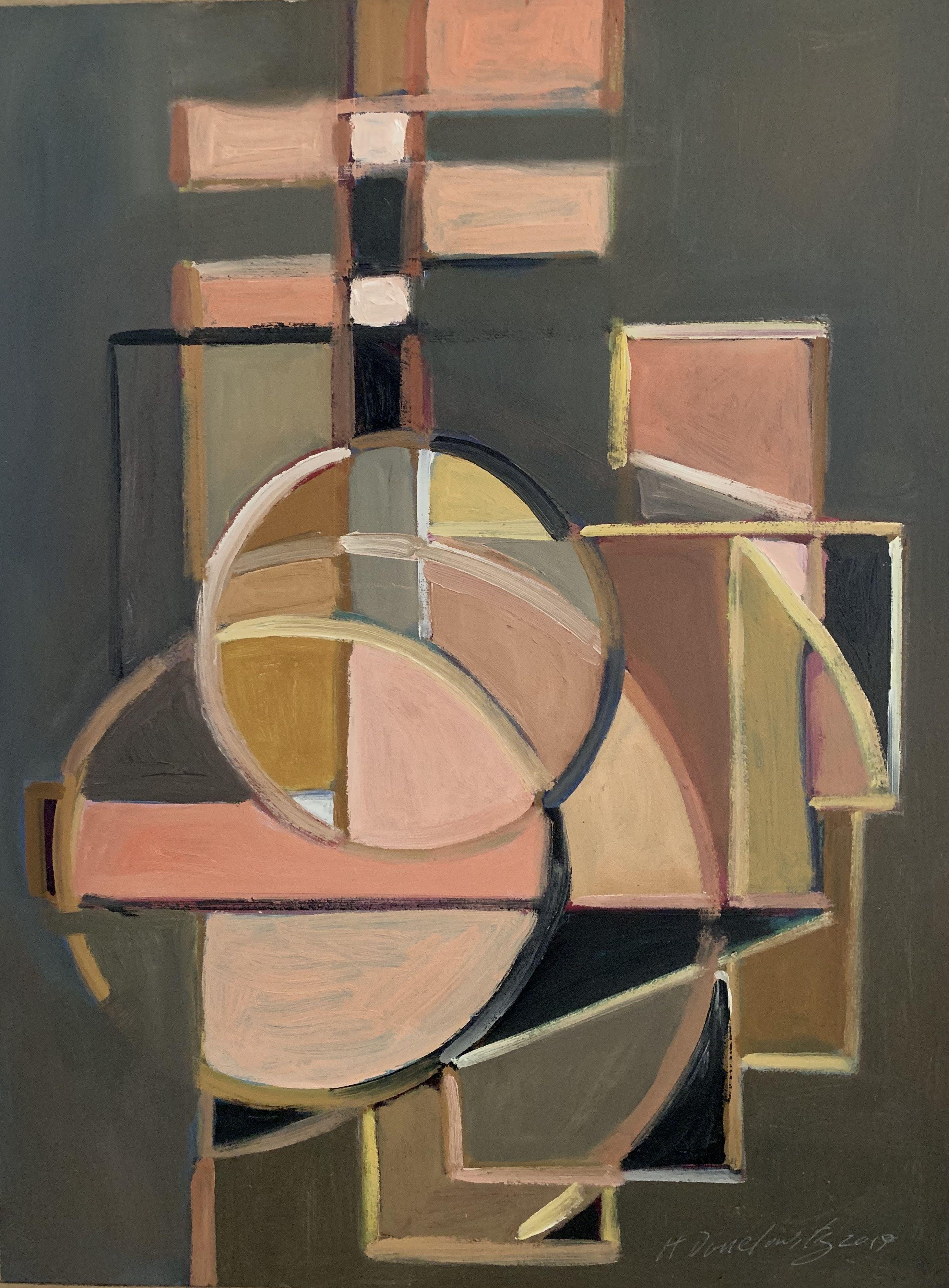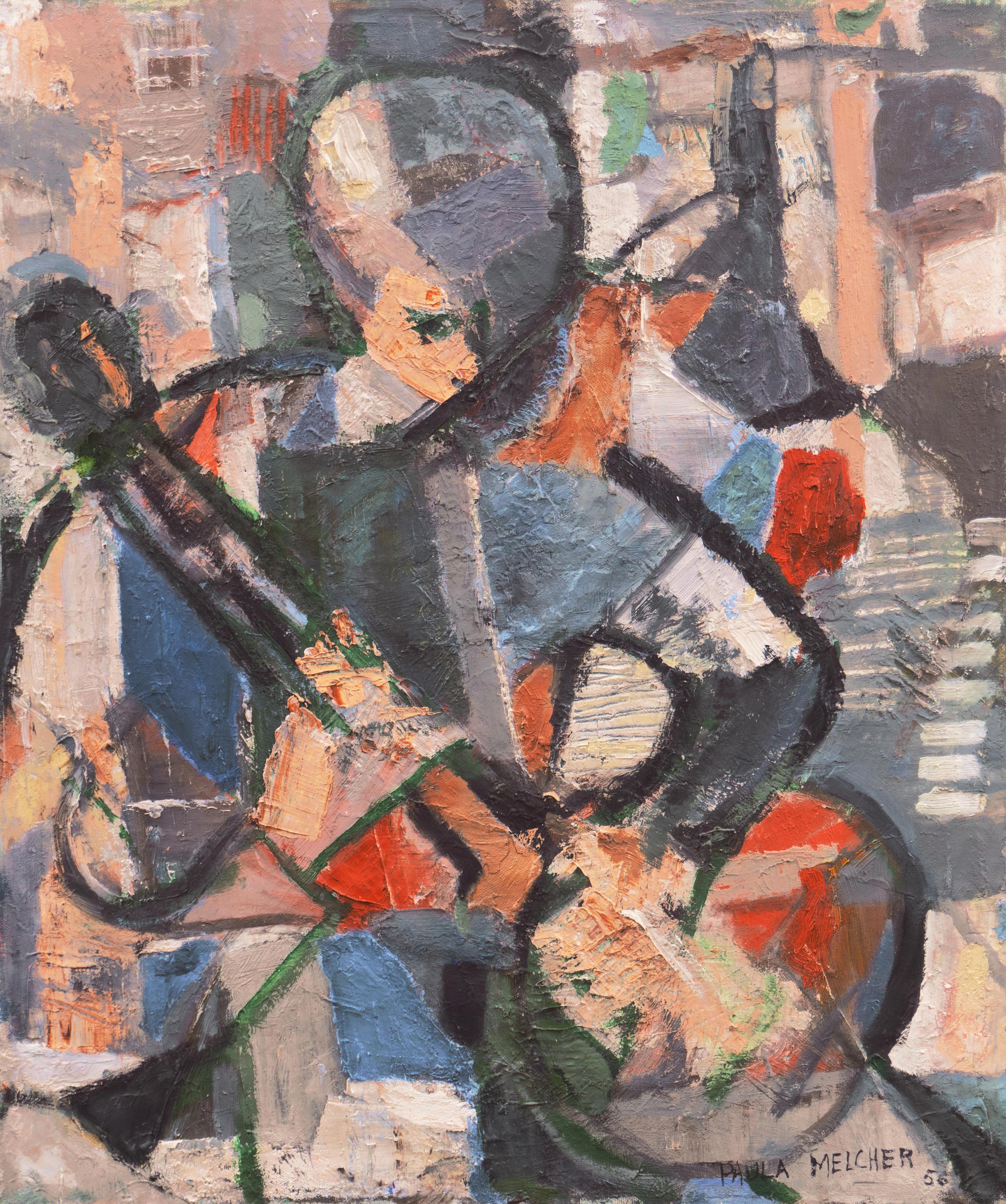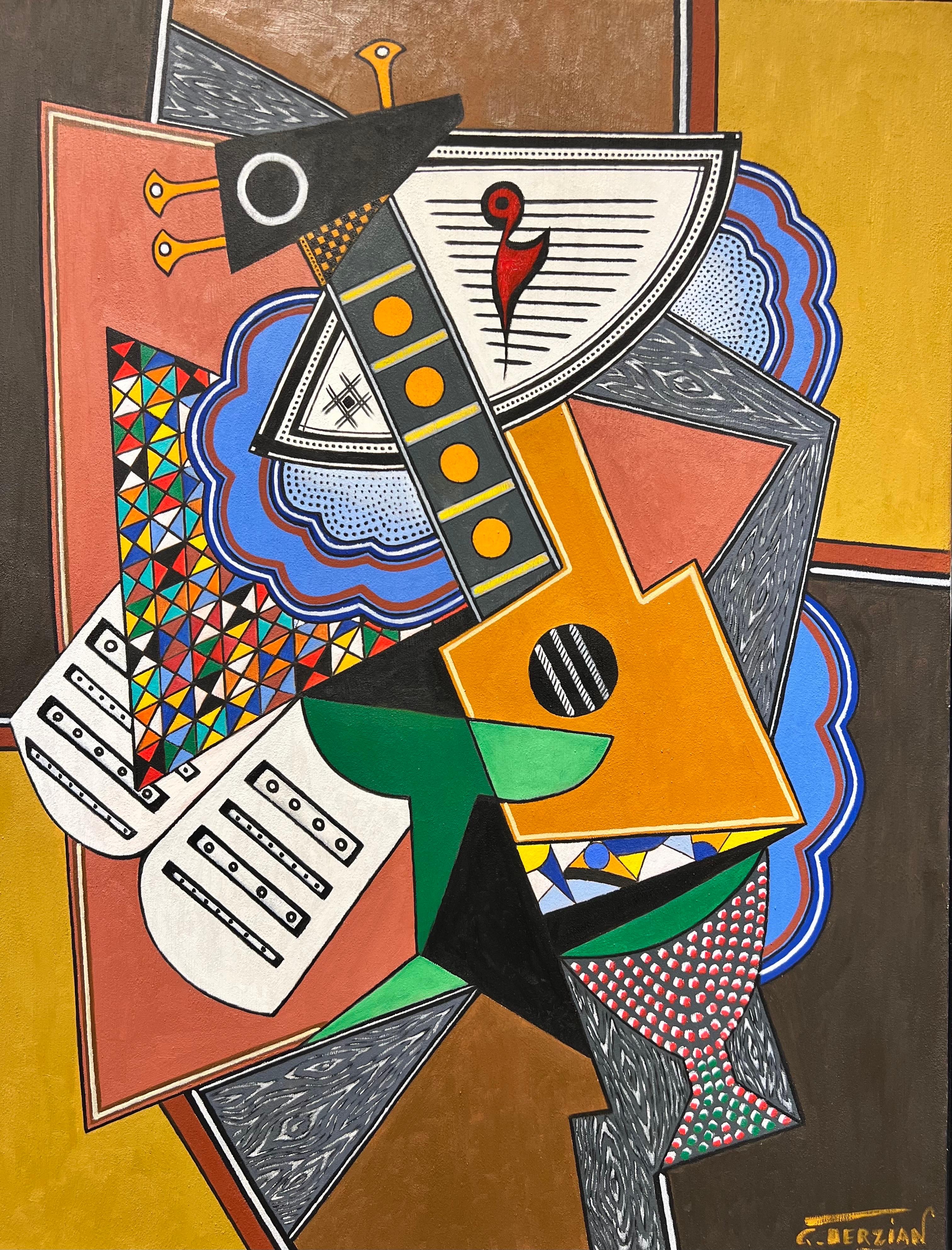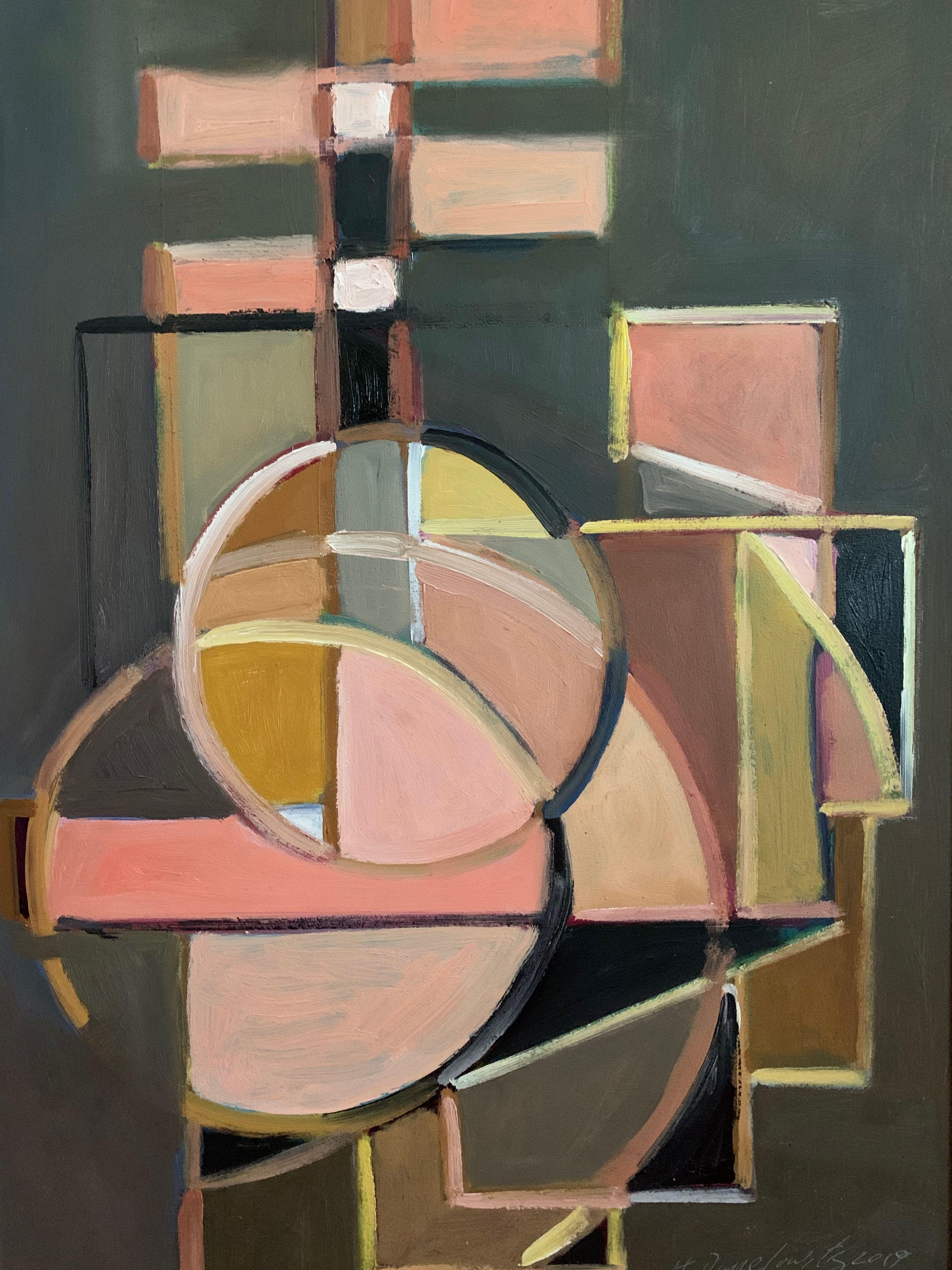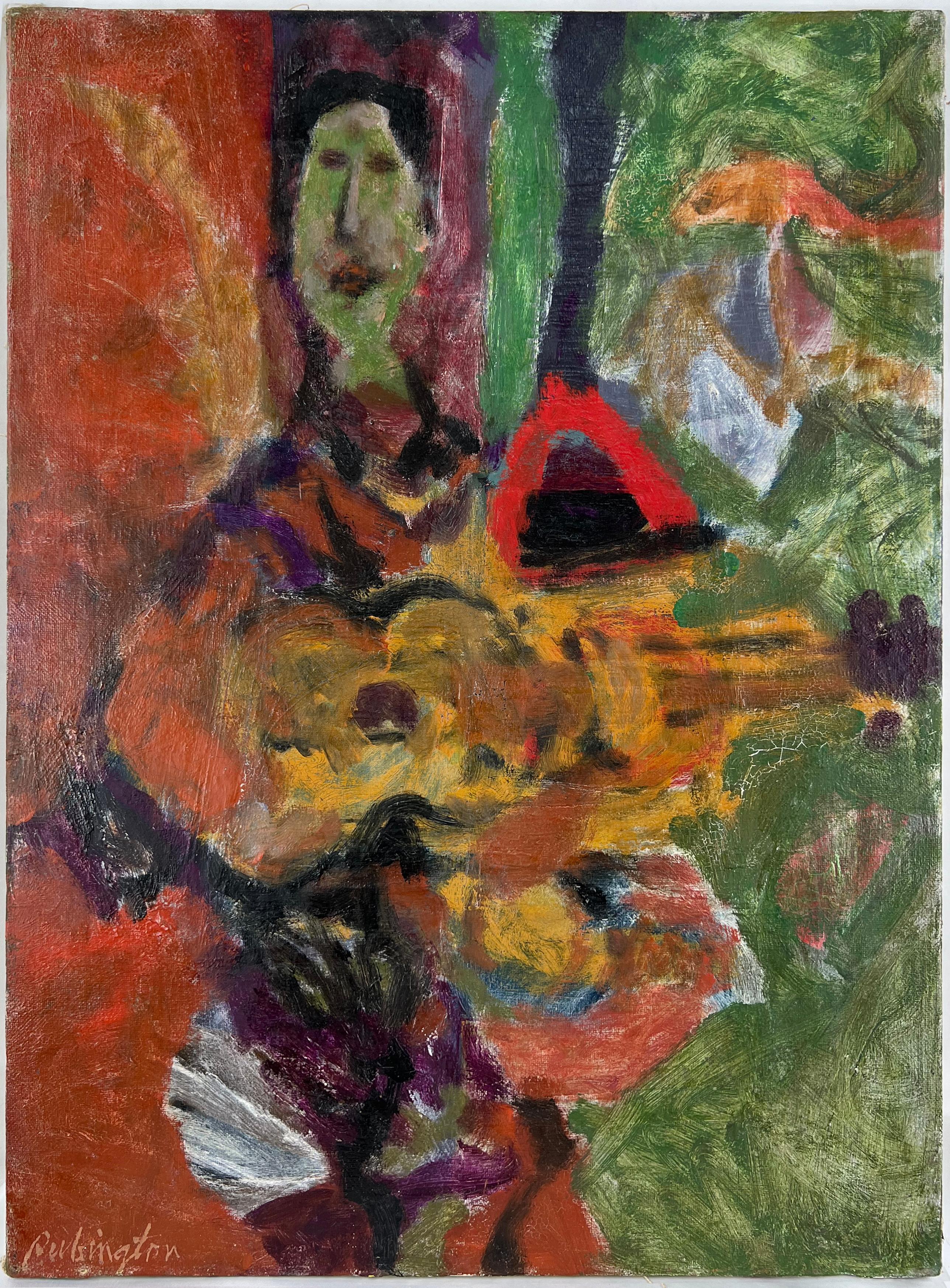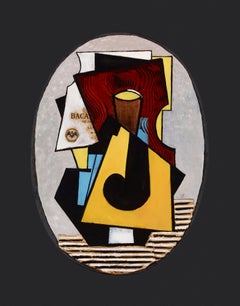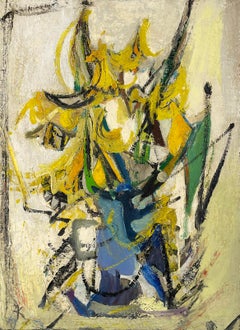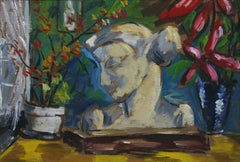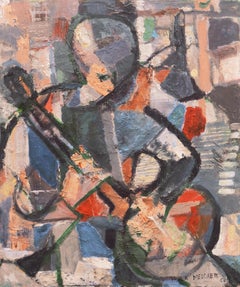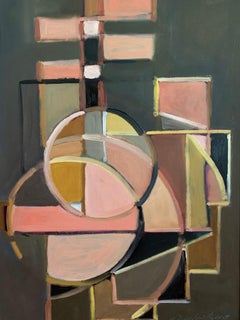Items Similar to Figure with Guitar II
Want more images or videos?
Request additional images or videos from the seller
1 of 7
Henry Fitch TaylorFigure with Guitar II1914
1914
$125,000
�£95,493.42
€109,699.73
CA$178,966.65
A$195,769.24
CHF 101,998.34
MX$2,355,543.63
NOK 1,291,673.18
SEK 1,212,757.31
DKK 819,187.88
About the Item
Provenance
Noah Goldowsky Gallery, New York;
Collection of Jeptha H. Wade and Emily Vanderbilt Wade, Boston, until 2025
Exhibitions
Cleveland Museum of Art, Art for Collectors, 1971, no. 278
Henry Fitch Taylor was an unusually progressive artist for his time. In fact, he was at the forefront of two important American art movements—in the late 1880s he was one of the first Americans to experiment with Impressionism, and in the 1910s, he joined the early modernist movement in America. Taylor was born in 1853 in Cincinnati, where he spent most of his childhood. Though he had some early success as an actor, Taylor soon turned to painting instead, and by the mid-1880s, he traveled to Paris to study at the prestigious Académie Julian. During his stay in France, he visited Giverny where he became close friends with Claude Monet. Under his influence, Taylor began experimenting with the bright colors and loose brushwork of the French Impressionist movement.
Upon his return to the United States, Taylor rented a studio in New York City and began to exhibit his Impressionist landscapes. In 1909, Taylor was appointed to direct Madison Art Gallery by Clara Davidge, an avid supporter of the arts and Taylor’s future wife. Taylor helped organize a series of successful exhibitions, including the famous and hugely influential International Exhibition of Modern Art, known as the 1913 Armory Show. By this time, Taylor’s own work had shifted from Impressionism to Cubism, and he continued to experiment with various avant-garde art movements such as Orphism and Synchronism throughout the rest of his life. In fact, Taylor was fascinated by innovative theories of color, particularly those exploring the relationship between color and music, and he published a book titled The Taylor System of Organized Color.
- Creator:Henry Fitch Taylor (1853 - 1925, American)
- Creation Year:1914
- Dimensions:Height: 32 in (81.28 cm)Width: 20 in (50.8 cm)
- Medium:
- Movement & Style:
- Period:
- Condition:
- Gallery Location:Bryn Mawr, PA
- Reference Number:1stDibs: LU2773216127442
About the Seller
5.0
Recognized Seller
These prestigious sellers are industry leaders and represent the highest echelon for item quality and design.
Platinum Seller
Premium sellers with a 4.7+ rating and 24-hour response times
Established in 2001
1stDibs seller since 2024
6 sales on 1stDibs
- ShippingRetrieving quote...Shipping from: Bryn Mawr, PA
- Return Policy
Authenticity Guarantee
In the unlikely event there’s an issue with an item’s authenticity, contact us within 1 year for a full refund. DetailsMoney-Back Guarantee
If your item is not as described, is damaged in transit, or does not arrive, contact us within 7 days for a full refund. Details24-Hour Cancellation
You have a 24-hour grace period in which to reconsider your purchase, with no questions asked.Vetted Professional Sellers
Our world-class sellers must adhere to strict standards for service and quality, maintaining the integrity of our listings.Price-Match Guarantee
If you find that a seller listed the same item for a lower price elsewhere, we’ll match it.Trusted Global Delivery
Our best-in-class carrier network provides specialized shipping options worldwide, including custom delivery.More From This Seller
View AllComposition, 1940–42
By Suzy Frelinghuysen
Located in Bryn Mawr, PA
Frelinghuysen Morris Foundation;
Valerie Carberry Gallery, Chicago, Illinois
Private collection until 2022
Suzy Frelinghuysen was born into a wealthy and prominent New Jersey family, and growing up, she was tutored in both art and music. While she showed an early talent for art, it was not her primary interest; as a child, she nurtured an nambition to become a professional singer. In 1935, she married George Morris, who came from an equally wealthy and distinguished New York family and had already established himself as an art collector, artist, and critic. Morris encouraged Frelinghuysen to paint and introduced her to a circle of affluent abstract artists, including the artist and collector Albert Gallatin. Gallatin owned a small but influential gallery, known as the Gallery of Living Art...
Category
Mid-20th Century Cubist Abstract Paintings
Materials
Masonite, Paper, Oil
Still Life
By Franz Kline
Located in Bryn Mawr, PA
Provenance
Private Collection (acquired directly from the artist);
Parke-Bernet Galleries, New York, Sale #2326, 27 January 1965, Lot 168;
Private Collection (acquired from the abo...
Category
Mid-20th Century American Modern Still-life Paintings
Materials
Canvas, Oil
Still Life with Robert Laurent Sculpture
Located in Bryn Mawr, PA
Born in New York City, modernist painter Adelaide Lawson Gaylor studied at the Art Students League and with Kenneth Hayes Miller. She was a member of the Society of Independent Artists, the Salons of America, and the New York Society of Women Artists. She was married to artist Wood Gaylor...
Category
1920s American Modern Still-life Paintings
Materials
Oil, Board
Nude
By Arthur Beecher Carles
Located in Bryn Mawr, PA
Provenance
The artist;
Collection of Walter Stuempfig, Philadelphia;
Private collection, Massachusetts until 2022
The Philadelphia modernist Arthur B. Carles was a brilliant coloris...
Category
Early 20th Century American Modern Figurative Paintings
Materials
Canvas, Oil
$62,500
Still Life
By Earl Horter
Located in Bryn Mawr, PA
Best known as an impassioned supporter and avid collector of modern art, Earl Horter was also an artist himself. Largely self-taught, Horter was a highly skilled draftsman and engrav...
Category
1930s American Modern Still-life Drawings and Watercolors
Materials
Paper, Pastel
Two Squares, Variation 5
Located in Bryn Mawr, PA
Two Squares, Variation 5
Bronze
6 3/4 x 5 x 5 inches
Stamped on base: Engman
Edition 4/25
Robert M. Engman (April 29, 1927-July 4, 2018) was an American sculptor who worked primaril...
Category
Late 20th Century Abstract Geometric Abstract Sculptures
Materials
Bronze
You May Also Like
Guitar, Painting, Oil on MDF Panel
By Howard Danelowitz
Located in Yardley, PA
Guitar coincidentallly references the shapes and lines that are seen in a guitar. There are transparent elements as well as solid shapes that add to the depth of the piece. :: ...
Category
2010s Abstract Abstract Paintings
Materials
Oil
'Man Playing a Banjo', American Mid-Century Cubist-Derived Figural Oil, Fifties
Located in Santa Cruz, CA
Signed lower right, 'Paula Melcher' (American, 20th century) and dated 1956.
Category
1950s Cubist Figurative Paintings
Materials
Canvas, Oil
Contemporary Composition of Guitar, Composition a la guitar, Georges Terzian.
By Georges Terzian
Located in La Canada Flintridge, CA
Composition à la guitare is a vibrant and visually captivating work that exemplifies Georges Terzian’s distinctive style. Known for his love of color and complex compositions, Terzia...
Category
2010s Abstract Expressionist Figurative Paintings
Materials
Oil
Guitar Abstracted, Painting, Oil on MDF Panel
By Howard Danelowitz
Located in Yardley, PA
"Abstracted Guitar" references back to the early cubist painters who taught us new ways to see images. We see various parts of the musical instrument reassembed in a new and balance...
Category
2010s Abstract Abstract Paintings
Materials
Oil
Mid Century Abstract Expressionist Guitarist Figurative
By Norman Rubington
Located in Soquel, CA
Wonderful abstract expressionist painting of guitarist painted by Norman Rubington (American, 1921 - 1991) while in Rome, 1952. Signed lower left and on verso. Dated "11 - 52, Roma" ...
Category
1950s Abstract Expressionist Figurative Paintings
Materials
Canvas, Oil
$2,000 Sale Price
20% Off
Woman with a Guitar, Painting, Oil on Canvas
By Tanya Grabkova
Located in Yardley, PA
This original oil and acrylic painting ΓÇ£Woman with a GuitarΓÇ¥ is painted by inspired Picasso. :: Painting :: Modern :: This piece comes with an official certificate of authentici...
Category
2010s Modern Paintings
Materials
Oil
More Ways To Browse
Henry Ii
Clara Antique
Antique Guitar
Antique Guitars
Henry Taylor
W Adam Original Oil Painting
Walter Gutman
William Quinn
100 Dollar Art
36 X 42 Painting
48x48 Hunt Slonem
Abstract Art With Words
Abstract Blue Splatter Paintings
Abstract Painting Eiffel Tower
Abstract With Words Painting
Amigo Oil Painting
Andrew Hudson
Angela Lane
